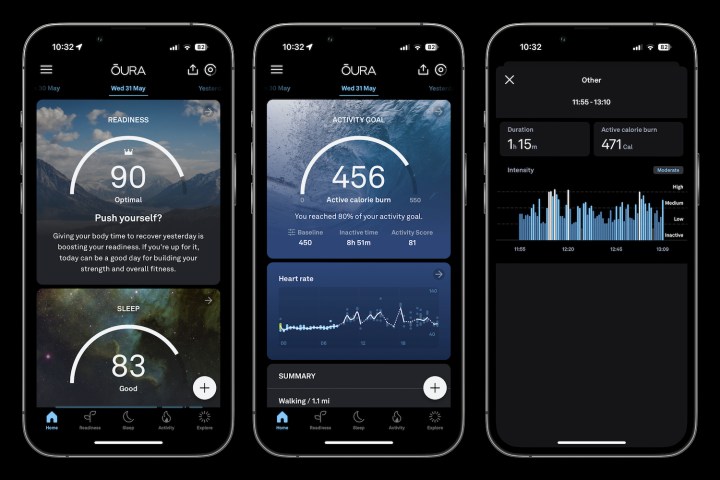
Oura, the company that produces the Oura Ring smart ring, has introduced its first social feature, which allows wearers to share certain data between friends. It’s called Circles, and its announcement is joined by the final release of its Sleep Staging algorithm, which has been in beta since 2022.
Oura’s CEO, Tom Hale, explained the thinking behind Circles’ launch:
“Our mission at Oura has always been to improve the lives of our members by taking a compassionate approach to health, and this new feature is just the next step in delivering a personalized experience that allows our members to connect with not only their bodies, but also their friends and family.”
Through Circles, you’ll be able to share the three main data points in the Oura Ring app — Readiness, Sleep, and Activity — collected over a two-week period. It’ll be down to you which scores you share and how often, and you’ll have the option of doing so daily or weekly. You can react to scores by using one of the custom emojis in the app and share data with up to 10 different Circles (which we assume to mean 10 different people). It doesn’t seem like you’ll be able to share any of the deeper data points, such as body temperature or resting heart rate.

Oura has also announced that its Sleep Staging algorithm will finally leave its beta stage and become the standard sleep-tracking system for the Oura Ring. It first launched in November 2022 and has been in beta ever since, with the option to switch between it and the old system available in the Oura app. Over the past months, it has been available to all Oura wearers, but the beta tag will now be removed for both Android and iOS users.
The algorithm is the result of two years of research and data collection from the Oura Ring and polysomnography (PSG) data from other sources, and Oura calls it “among the most accurate sleep-staging algorithms available in a consumer wearable.” It is in 79% agreement with PSG data for light, deep, REM, and waking sleep stages. The sleep-staging algorithm helps inform one of Oura’s other recent feature releases, your chronotype, to help you better understand when your ideal bedtime is.
Tempted by the Oura Ring? We recently completed our long-term review of the third-generation model and recommend digging into it before making a purchase.
Editors' Recommendations
- The Oura Ring has a hidden mode that every other wearable needs
- This smart ring has a feature you would never expect
- The Oura Ring just got a lot more helpful if you’re pregnant
- Is this new smart ring the Oura Ring killer we’ve been waiting for?
- One feature will make the Apple smart ring worth waiting for




